Table of Contents
- What is Mulching?
- Benefits of Mulching
- Conservation of moisture
- Protection of beneficial organisms
- Minimizing or preventing erosion
- Minimizing soil compaction, crusting, and cracking
- Regulation of soil temperature
- Increase in soil fertility
- Reducing disease dwellings
- Improvement of infiltration capacity of the soil
- Containment and removal of toxic residue
- The control and hindering of unwanted weeds
- Desalination of soil
- The protection of seedlings and young plants
- Improvement of the overall soil drainage
- Improved soil aggregation
- Visual enhancement of beauty
- Containment of debris and reduction of random littering
- Helps the development and health of subsurface and surface roots
- Keeping low-lying fruit, gourds, and vegetation from making contact with the bare ground
- Minimizing the need for the use of pesticides
- Types of Mulching
- Types of Mulch Film for Specific Conditions
- Mulch Colors
- Mulching Bags
- Landscape Mulching
What is Mulching?
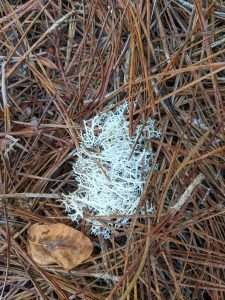
Mulching in ecology is the agronomic act of applying suitable materials known as mulch (pieces of a dry or moist material added to soil surfaces) to the surface of cultivated soil or the earth around the base of plant stalks. Several different types of materials, (2-4) inches thick, can be effectively used for mulching.
These materials are applied evenly on the topsoil along the length of a flower bed, flower pot, agricultural furrow, or the surface soil around the base of plants. The material typically completely covers every inch of the topsoil around the plants without exposed areas.
The application of material for mulching has a minor similarity to the use of garden fabric or row covers as they are both used to cover the topsoil of cultivated land allowing only the wanted plants to stand.
However, unlike row covers which are usually in long continuous, transparent, and sometimes impermeable strips, mulch is usually made up of a very permeable cluster of multiple individual small pieces although it can also be applied in long strips of material to cater to a specific crop, soil, or plant requirements.
Benefits of Mulching
Mulching is carried out for the several agricultural and ecological benefits that are derived from its application. These benefits are often the difference between possible optimal or diminished utility derived from either of the following important plant uses.
Its use greatly enhances the production of cultivated agricultural, herbal/medicinal, or cash crops, growing plants for use as biofuel, the propagation of plants, and reforestation for ecological processes and ozone protection, oxygen production, and the general health of the ecosystem, for use in the pharmaceutical industry, also in the construction industry for use as building materials, or the aesthetic value of decorative and ornamental plants.
The advantages of using mulch in the growing of plants are numerous when applied correctly and used in tandem with other beneficial practices tailored to specific plants, soil types, and climates. The general benefits of using mulch are as follows:
Conservation of moisture
The covering of the soil surface greatly reduces moisture loss from evaporation because the sun’s radiation is blocked from making direct contact with the soil and causing substantial evaporation. It also conserves water by limiting or eliminating runoff water from rain, dew, or irrigation.
Many types of mulch also have the capacity to absorb and store moisture during periods of high humidity and discharge some of the moisture during periods of low humidity when the plant needs it most. Mulch also increases the water-holding capacity of sandy soil types.
Protection of beneficial organisms
Beneficial humus-producing micro and macro-organisms like some nematodes and certain bacteria are protected from predators that feed on them and from damaging or fatal exposure to the elements. Mulches not only provide shelter and protection for beneficial organisms but also act as a source of nutrition and medium for cushioning, containing, and protecting their eggs, spores, or young.
Minimizing or preventing erosion
Erosion from wind and especially water can erode and remove great volumes of earth over time, but mulching helps to hold soil and roots in place and absorb the impact of wind and water. The adhesive nature of the detritus material that results from the decomposition of mulch and other organic plant and animal waste plays a crucial role in preventing erosion.
Minimizing soil compaction, crusting, and cracking
It helps prevent soil from becoming crusted and cracked or compressed and clumped together in a way that shuts it off from nourishment, oxygen, roots of plants, and many beneficial organisms by promoting aeration, sufficiently loose soil, and permeability. Pieces of mulch rest between quantities of soil effectively preventing clogging (obstruction and choking of spaces thereby preventing free movement) and creating pockets of spaces.
Regulation of soil temperature
The material helps retain heat during cold periods and protects the soil, roots, and beneficial organisms from frost and extremely cold weather.
It also retains cool temperatures and protects the soil, micro/macro-organisms, and plant roots from excessive direct heat radiation during heat spells and sunny weather. This regulation is very important for the health and development of the soil, micro, and macro-organisms.
Increase in soil fertility
The protection of the soil and organisms from the elements and predation enhances the activities and well-being of beneficial organisms like earthworms and other microbes that improve the fertility of the soil. This is achieved by their producing humus and improving aeration by tunneling, obstructing soil clogging, and enhancing its aggregation. It also helps prevent the loss of nutrients from the soil. Organic mulches also decompose over time and add nutrients and beneficial organic material to the soil greatly contributing to the generation of detritus. Thus, it also leads to the increase of the germination percentage of seeds.
Reducing disease dwellings
Many plant disease pathogens use moist soil as a reservoir from where they attack the plants and move between the soil and the plant. Healthy mulch hinders this relationship by denying pathogens access to and from the topsoil. It also eliminates splashing drops of water from rain and irrigation which is the primary vehicle for the spreading of hazardous pathogenic spores.
Improvement of infiltration capacity of the soil
It breaks up the flow of water, reducing its velocity and discharge volume to smaller quantities that can percolate and infiltrate the soil easily. Mulch also aids infiltration by trapping water that would otherwise runoff or disperse on impact with the bare ground. This enables it to slowly percolate downwards due to gravity into the soil. An action made easier from the piercing of the topsoil and creating spaces that accommodate and contain the water giving it time to seep through.
Containment and removal of toxic residue
This toxic residue can originate from different sources including insecticides, herbicides, synthetic fertilizers, and heavy metals. Many potentially harmful substances are absorbed by the mulch, remediated, and rendered innocuous or contained in parts of the material which can then be subsequently removed.
The control and hindering of unwanted weeds
It prevents the growth of weeds and other unwanted plants by covering up and obstructing weed seeds, seedlings, and potential sprouting areas, also denying their seeds the sunlight necessary for their germination and development.
Mulch also creates favorable conditions for beneficial microbes that feed on weeds and their seeds. Some organic mulches are also able to achieve an allelopathic (stimulating or inhibiting effect of certain biotic organisms on other biotic organisms) effect by releasing certain toxic chemicals that harm some invasive species of plants and weeds compromising their chances of survival.
Mulches made from eucalyptus, acacia, and pine are some of the types of species that have beneficial allelopathic tendencies.
Desalination of soil
Research has shown that organic mulching also helps to reduce the salt content in the soil which can accumulate due to different factors such as the use of unremediated salt-containing municipal waste for irrigation, and the use of certain synthetic fertilizers, pesticides, and detergents that wash into the soil. Many of these compounds contain salts and other toxins that can be remediated by correctly constituted mulches.
The protection of seedlings and young plants
Dispersed seeds, germinating seedlings, young shoots, and other vulnerable plants are initially hidden and later physically protected from any direct access to the stalk or roots which are the common areas that suffer ground-based attacks.
The relatively stable temperatures maintained by the mulch and insulation from the elements also benefit the seeds, seedlings, and young or vulnerable plants.
Improvement of the overall soil drainage
Water retention and controlled drainage of moisture from the land are achieved through the mulch controlling the impact and flow of the water. It also greatly helps prevent flooding and bogging from the accumulation of water by acting as a buffer for the soil and helping to aerate it by breaking up the surface.
Improved soil aggregation
The binding of multiple particles of soil together to form rich loose clumps known as secondary units of soil. The soil aggregates, particularly the water-stable types play a crucial role in increasing water infiltration, resource (soil, water, minerals, and nutrients) conservation, and good overall soil structure.
Visual enhancement of beauty
The aesthetic value of mulching includes the beauty and orderliness of neatly mulched plant vessels or beds that can be pleasing to behold. Both the colored and plain mulches can add to the visible appeal of vessels or landscapes where they are applied. They make surfaces look even, uniformly distributed, and bereft of dirt and macro-organisms that people typically avoid contact with.
Containment of debris and reduction of random littering
The spreading of pieces of organic material, sand, silt, and soil around the vicinity of the plants and immediate surroundings by wind, microbial activity, animal activity, the movement of water, or some other natural factors is greatly reduced. The mulch covers up and holds down the debris that could potentially litter the surroundings.
Helps the development and health of subsurface and surface roots
Mulch greatly enhances the health of aerial and white roots above the surface of the soil and controls the humidity around the plant root zone. It does this by insulating the roots from harsh elements, parasitic diseases, animals, and other harmful organisms that may want to feed on the sap from exposed roots.
Keeping low-lying fruit, gourds, and vegetation from making contact with the bare ground
Low-lying fruits vegetables and leaves can become bruised from brushing against the ground and are exposed to potential infections and easier access by parasites that dwell in the soil or use it as a staging area for attacks on the crops. The application of mulch creates a barrier that insulates fruits stalks and other parts of the plants from direct contact with the ground.
Minimizing the need for the use of pesticides
Mulching deals with many pest problems associated with pathogenic and weed access to the plant parts and surroundings thereby limiting or eliminating the need for the application of insecticides, fungicides, and herbicides.
Types of Mulching
There are basically 2 types of mulching under which all the other numerous forms fall. They are similar methods that are used for the same fundamental purpose of aiding and improving the utility derived from plants and soil but cater to different specific requirements in diverse ways using different materials. The two major types are:
- Organic Mulching
- Inorganic Mulching
Organic Mulch

Organic mulch is material used to cover cultivated land or the soil beneath agricultural crops or ornamental plants that is made up of biodegradable natural plant or animal products that nourish the soil and is bereft of synthetic components. Organic mulch is a temporary application that biodegrades and may need to be replaced or topped up after it has decomposed and become part of the soil.
This method of soil enhancement and fertilization through organic decomposition is considered a form of direct composting (the controlled biodegradation by decomposition of animal and plant material for fertilizer production).
It is typically constituted of organic material like wood chippings, grass cuttings, low-growing cover plants (living mulch), wood/bark shavings or chippings, compost, branches and twigs, pine needles, shells from nuts and fruits, leaves and plant debris, husks from seeds or fruits, shells, hulls, fruit peels, manure, paper, e.t.c.
Natural Mulching
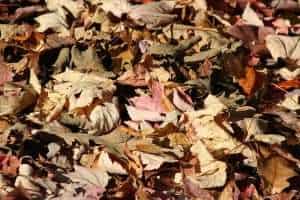
Natural mulching refers to organic mulching (covering of the topsoil with organic waste from plants and animals) occurring in nature without the input or influence of man. It happens in forests, jungles, and other natural ecosystems that have substantial vegetation.
The mulch is made up of mostly plant litter (litterfall or duff is the dead and decaying plant material found on the soil surface underneath areas of vegetation or forest and jungle floors) and partly from other organic waste accumulated on the soil surface from trees, other organisms, and plants.
Inorganic Mulch
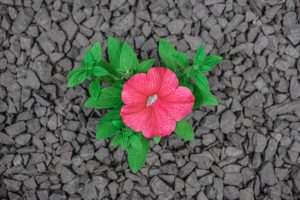
Inorganic mulch is the material used to cover cultivated land, bare areas of land and yards, the soil beneath agricultural crops, or ornamental plants that is made up of non-biodegradable synthetic, natural but abiotic, or man-made products. Inorganic mulch is a permanent application because the materials will not decompose but will remain where they have been applied unless manually removed.
This type of mulch includes materials such as pebbles, gravel, crushed or broken-up rocks, rubber pieces, polyethylene (PE) material including several shapes and forms of plastic products, film, and other synthetic materials, e.t.c.
Care must be taken when applying mulch and particularly inorganics by determining the suitability for the specific plant and soil types. This is because many forms of inorganic mulch contain substances that are harmful to certain plants and soil types.
Degradable Mulch
Degradable mulch refers to organic and inorganic materials adapted for use as mulch that has been artificially engineered to degrade and decompose over time and after exposure to certain environmental conditions.
Degradable mulches can be made from organic materials like plant starches and sugars or inorganic materials like polyester fibers, geotextiles (or landscape fabrics are permeable materials typically made from polypropylene or polyester used to enhance soil utility), and other plastics/synthetic materials. They basically consist of two main types namely:
- Biodegradable mulch
- Photodegradable mulch
Biodegradable Mulch
Biodegradable mulch is mainly made from organic materials that will decay and decompose naturally when exposed to environmental elements and conditions for a period of time. This type is typically mixed deeper into the soil as it will readily decompose and release nutrients into the soil.
They are usually produced from plant starches and sugars. Although technically, organic mulches are more biodegradable than inorganic ones, the term is sometimes used in reference to inorganic materials like some plastics and fibers that have been mixed and engineered to decompose.
Photodegradable Mulch
Photodegradable mulch is mainly made from inorganic materials that have been designed and constituted in a way that ensures its decomposition after exposure to sunlight over time. This type of mulch is made from synthetic materials like polyester and is not mixed or buried but left on the surface of the soil where it has maximum exposure to sunlight for its effective decomposition.
Types of Mulch Film for Specific Conditions
Mulch application is not universally beneficial when applied randomly without the proper knowledge and competent evaluation. This is to ensure that the prevailing conditions, indigenous biological life (flora and fauna), and local area-specific topography are suitable for the type of material to be deployed and in the correct ratio of constituents to enhance rather than harm the plants, soil, immediate and extended environment.
The soil conditions and type, animal and plant, or crop type, climatic conditions, mulch type, biodegradability, and its chemical constituents, all have to be determined to successfully carry out beneficial mulching. The correct mulch film types for specific conditions and crops are outlined below:
- Weed control and solarization – Transparent film
- Rainy season crops – perforated or permeable material
- Weed control in cropped land with sandy soil and saline groundwater – Black film
- Orchards and mature trees – Thick mulches
- Seed germination – Thin and light films
- Summer crops – White film
- Insect control – Silver film
- Solarization – Transparent thin films
Mulch Colors
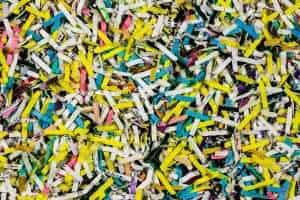
Mulch colors refer to the particular pigment of the material to be applied to the soil which in some instances can have a notable significance in the effectiveness or adverse effects the applied material will have on the health of the soil, animals, and plants in the immediate vicinity.
Although many forms of colored mulches are purely cosmetic in terms of utility having mostly visual and aesthetic value with limited biological or productive importance, there are some that greatly enhance the environment and have a huge production and sustenance value.
For the more useful types, different colors are used to derive different case-specific benefits and utility depending on their effects. The color of mulch has a significant effect on important factors like soil temperature, attraction or repulsion of insect pests, the salinity of the soil, the temperature of the air in its immediate vicinity, and the incidence of weeds.
Organic Mulch Colors

In the use of organic mulches, the coloring is typically natural and is usually an indication of the type of mineral it contains. It has been established that green plant material though usually turns brown when dead, provides a high nitrogen content.
Brown plant material provides a high carbon content. Red material usually indicates a high red phosphorus or iron oxide concentration which can be used in phosphorus-deficient soils after determination through a soil test.
Many organic colored mulches are used with their natural colors which may look duller than the artificially applied ones but they are generally safer to use, have no unnatural discharge, cost less to prepare or purchase, and decompose more rapidly. The coloring of mulch generally has an effect on factors like the reflection and refraction of light, the attraction or repulsion of organisms like some insects, and an influence on the soil temperature.
There are also some organic mulches that are artificially pigmented with different forms of colors. Some of these pigments are organic and generally harmless to living organisms and the environment like the iron oxides and carbon that are sometimes used, and others particularly inorganic types such as those that contain synthetics and toxic chemicals are harmful
Inorganic Mulch Colors
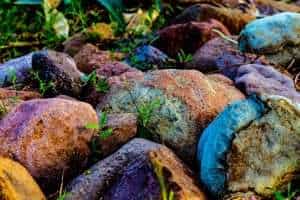
In the use of inorganic mulches, synthetic colored film and other colored plastics and materials are used to achieve specific aims for the quality of the soil and plants. Although some dyes may have practical applications, different types and colors of dye are also used on some mulch mainly for their colorful beauty, decorative qualities, and general aesthetic value.
However, not all the types of dyes used are safe or suitable for the soil and plants they are applied to and some can discharge harmful toxic pollutants. Most harmless organic dyes are iron oxide-based for red colors and carbon-based for brown and black colors.
However, other inorganic types can contain toxic chemicals such as many kinds of recycled wood that were previously used for urban purposes before being discarded as furniture and woodwork waste which is sometimes then processed into mulch but still contain a toxic wood preservative that they were treated with called chromated copper arsenate (CCA) which is hazardous to organic organisms.
The plastics and film materials that are used in plastic mulching do not contain dyes and are manufactured and colored industrially. They are removed from the soil after the growing season because they are not typically biodegradable. The main colors and their purposes are outlined as follows:
Mono/Single-Colored Mulch Film

- Black mulch is used to block out the sun’s radiation and effectively hinder photosynthesis from taking place beneath the material. It also traps heat thereby raising the temperature of the soil which may be beneficial to the roots but hazardous for pathogens and weeds.
- Transparent types are used to allow the sun’s radiation to penetrate through the material for optimal soil solarisation (chemical-free and eco-friendly method of killing and controlling weeds and pests by heating up the soil through exposure to solar radiation). It also traps heat that keeps the soil temperature warm.
Di/Dual Colored Mulch Film
Dual colored mulches play similar roles as the mono-colored types except that they have a two-pronged effect rather than a single function. They are typically engineered to absorb certain specific wavelengths from the spectrum of the sun’s radiation.
Variations in photo availability in terms of shade and intensity have important influences on the growth and development of plants. The main dual-colored films, their colors, and purposes are as follows:
- White and black – Cools the soil and effectively transfers more than sixty percent (60%) of the photoactive radiation to the plant optimizing its girth and strength.
- Yellow and black/brown – The darker side (black or brown) is placed towards the soil while the yellow side faces upwards toward the sun and attracts whiteflies (small but very destructive insect crop pests that operate in swarms) that become trapped and prevented from causing damage.
- Red and black – This combination is typically made to be partially translucent and designed to allow a certain degree of radiation from a specific wavelength from the light spectrum to warm the soil. It is also designed to reflect light back onto the plants at a given intensity that promotes healthy flower development, early fruiting, and increased yield.
- Silver and black – This is statistically most commonly used dual-color inorganic mulch primarily due to its being suitable for all crop and plant types. The silver coating has been determined to reflect between twenty-five to thirty percent (25% – 30%) of the solar radiation it receives.
Mulching Bags
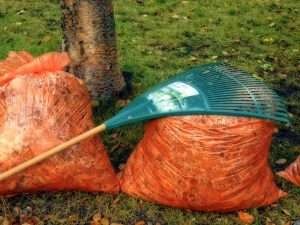
Mulching bags are simply durable, sturdy, and spacious weather-resistant bags that come in different sizes and functional features. They are designed to easily be stacked for convenient storage or transportation. There are specially designed and manufactured bags that have different features to cater to a variety of different types of mulches.
Varieties of bags include very tough durable ones that can handle coarse materials like rocks and hard types of wood, others are breathable or perforated to allow the aeration of moist mulches or fungi-prone organic types, and colored or transparent types to have the required effect on the kind of material that they hold for optimal utility.
Other types of bags that are used are bags that were originally used for other purposes but may be suitable for storing or carrying mulch and are adapted and used as such. A household type of bag that is commonly used to contain light and non-abrasive types of mulch is the common big black trash bag.

Other sturdy bags like cement bags, sackcloth bags, synthetic sacks, and tough cardboard types are also sometimes adapted for use as containment receptacles for mulches and are therefore referred to as mulch or mulching bags.
There are also specially manufactured bags that are designed to fit on automated mulchers like lawnmowers and other machinery that have the capacity to cut up vegetation and automatically channel the shreds or pieces into the attached bags that can be easily detached for storage against later use or processed by drying and applied. These types of bags are also called mulching bags.
Landscape Mulching

Landscaping is basically any physical modification that is carried out on a specific area of land with the aim of improving the overall utility of that land. Landscape mulching is a modification in landscaping that involves the application of organic or inorganic material (mulch) to the land to improve the utility (usefulness) derived from the land. These utilities include beneficial attributes or gains that can be derived from the land such as;
The natural biotic elements. These include the indigenous and non-native flora (the entire plant life in a given area over a specific time period) and indigenous and non-native fauna (the entire animal life in a given area over a specific time period). Collectively the biotic elements make up the gardening aspect which is also termed horticulture.
The natural abiotic elements. These are made up of bodies of water, landforms (the natural or artificial physical features of the solid surface of land), terrain (the vertical and horizontal dimensions of land surfaces) topography (the arrangement of forms and features of land surfaces), and elevation.
The abstract elements. These include factors like climate (the average weather conditions in a particular biome over a long period spanning successive seasons) and the prevailing weather (short-term atmospheric conditions that include sunshine, rainfall, precipitation, relative humidity, temperature, wind intensity, and duration).
Landscape mulching involves the modification of both the natural biotic elements, particularly horticulture (the art of plant cultivation in gardens to produce food, medicine, or to derive ornamental and aesthetic utility), and the natural abiotic elements, particularly landforms and terrain. It employs the agronomical enhancement practice of mulching to improve the productive and aesthetic value of particular land areas.
Mulch is applied to flower beds and around plants primarily to improve the health and yield of the soil and plants. However, in landscape mulching, it is not only applied for the benefit of plant and soil health but also to aid the beautification and functionality of the landscape design.
Mulching generally beautifies the landscape by giving it even surfaces, colorful sections, contrasting shades of colors, and material whose hue contrasts against plants, curbs, objects, ornaments, paths, roads, demarcations, e.t.c. making them stand out brilliantly.
It is also often used to partially or completely cover large areas of the landscape with different types such as the synthetic fake grass or surface kinds that can be laid in sheets or strips that follow the contours of the land and enhance beauty, neatness, and help minimize raised dust, the nuisance of creeping/crawling insects, other organisms, and random debris.
There are also small loose types of mulches like rubber shavings or pellets that are sometimes spread in hundreds or thousands of pieces that cover entire sections of different sizes of land. These mostly include locations where vulnerable people or animals congregate like playgrounds, containment enclosures, or yards.
These types of landscapes are generally where children, pets, or people can enjoy recreation and other activities with the rubber or other mulches acting as protection from potential dirt, pathogens, or ground-dwelling hazardous organisms and animals such as venomous snakes, scorpions, centipedes e.t.c. while also cushioning any impact from falling or any other hard contact with the ground. This type is often used in mulched yards (mulched sections in a landscape) where children play.
Mulched Yard

Mulched yards are simply spaces or areas within a landscape like a children’s playground in a park, home, or a school, a private, public, or commercial back, side, or front yard, or any other designated section of a landscape close to one or more buildings where mulch has been applied to the ground. This is regardless of the type of mulch, and whether or not there are any plants/vegetation in the yard.
Generally, a yard is defined as an area of land directly adjacent to one or more buildings. The word yard is associated with and has its origin linked to the term garden. Only the presence of mulch material that has been applied on a stretch of land close to one or more buildings qualifies such a place as a mulched yard.
Mowed grass or other materials that have either been left on a home, office, or any other lawn close to a structure to constitute mulch or taken from there and applied on another courtyard, farmyard, or barnyard, churchyard e.t.c. can be called a mulched yard. Such yards may either be opened without an enclosure or a closed one bordered by walls or fencing. Some landscape yards consist of established mulched gardens.
Gardening with Mulch
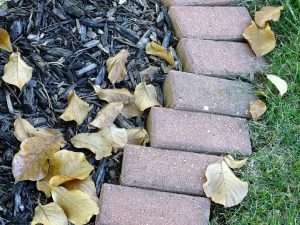
The same basic practices and techniques that are used for agricultural mulching are the ones that are applied to domestic and commercial gardening as well. The most important preparation is that a concise survey, soil test, and evaluation must be undertaken.
This is to determine the soil type and condition, especially the availability of nutrients and minerals in what ratio, feasibility, and suitability of the type of crops and/or plants intended for cultivation, landscape attributes, and topography, weather, climate, nature, and type of mulch most suitable for the intended vegetation to be established or maintained.
Generally, organic mulching without artificial coloring or additives is most suitable for gardening with consumer or food crops. Professional inorganic film filters are also sometimes used depending on the existing necessity. This is to limit the infiltration of food crops by inorganic synthetic materials that are not healthy for consumption.
For ornamental and decorative gardens, however, inorganic and artificially colored mulches can sometimes be used if they are suitable for the soil and plants because they will not end up as nutrition for people or livestock.
Generally, the sizes of the individual pieces of mulch material usually depend on the corresponding sizes of the target plants. Most garden plants are usually moderate to small in size even though there might be a few trees or larger shrubs present on site.
This implies that the majority of garden mulch will be made up of smaller pieces except for the large plants like trees that require larger chunks.
Material that can be used as organic garden mulch is mainly derived from natural vegetative and animal matter. This is because they contain virtually all the nutrients and properties necessary and are most suitable for garden soil, plants, and their local atmosphere.
The most efficient way of harvesting, processing into suitable sizes/forms, and gathering the organic vegetative material, is by the use of machines that can harvest, cut up, and stash it called mulchers.